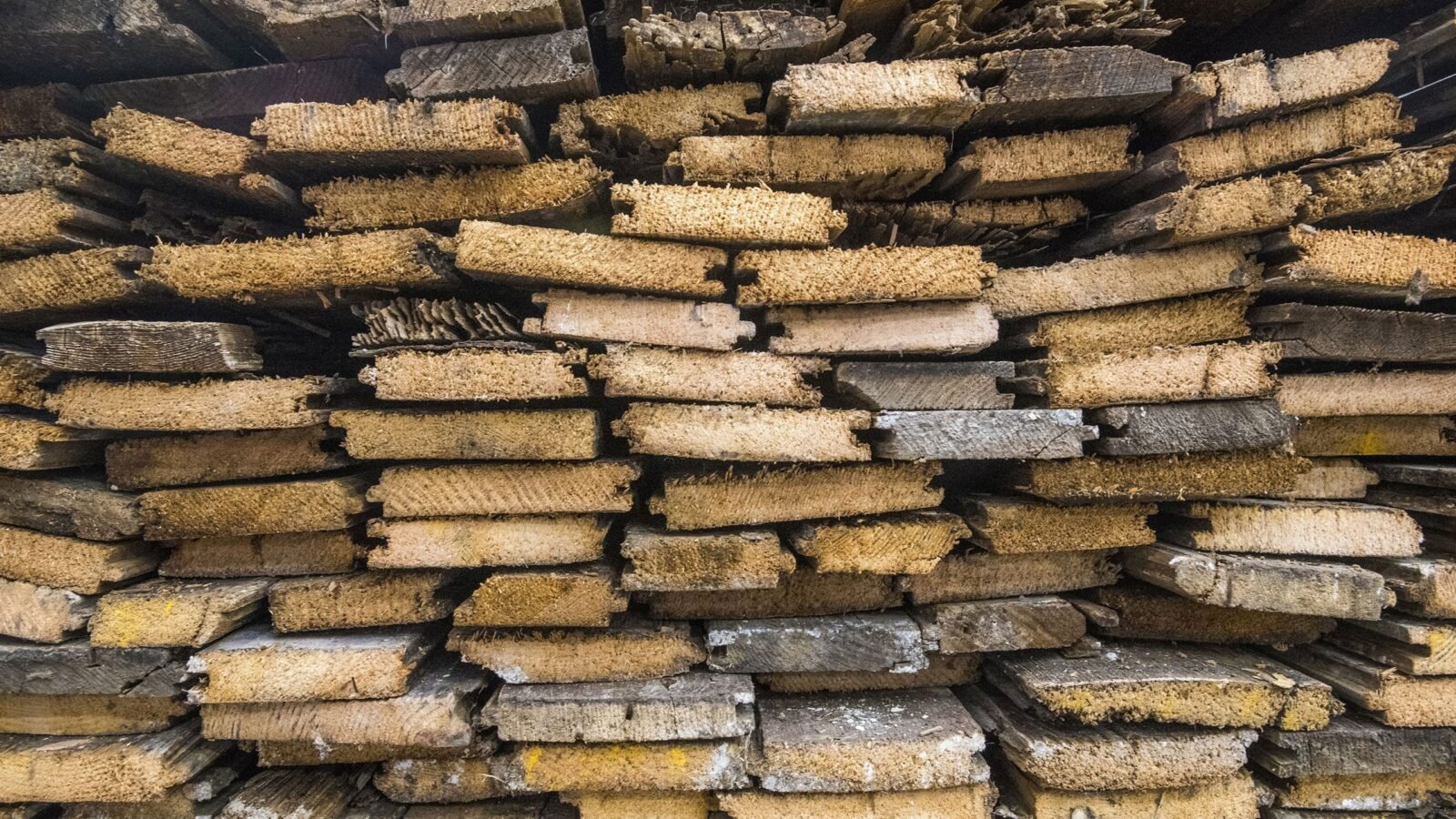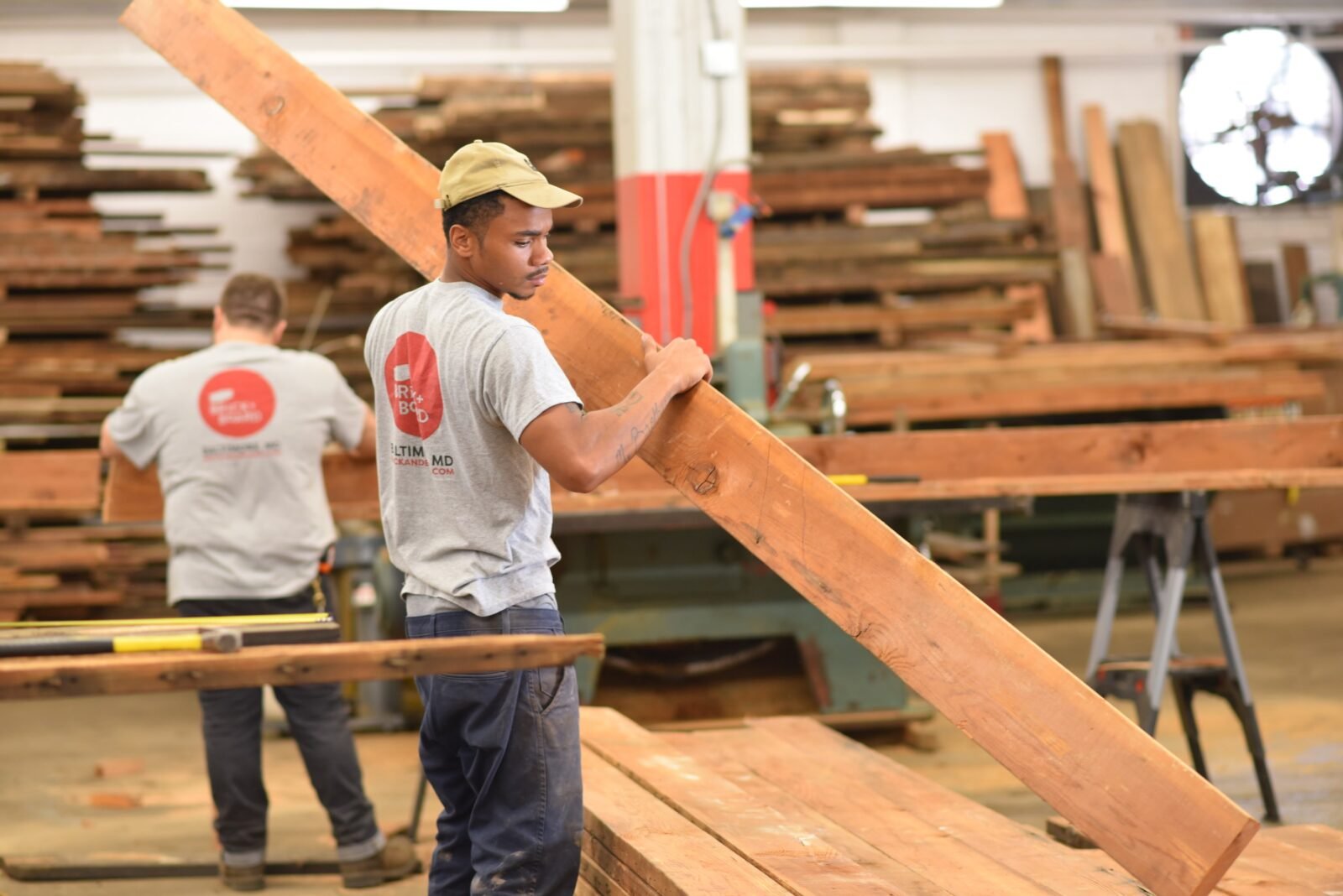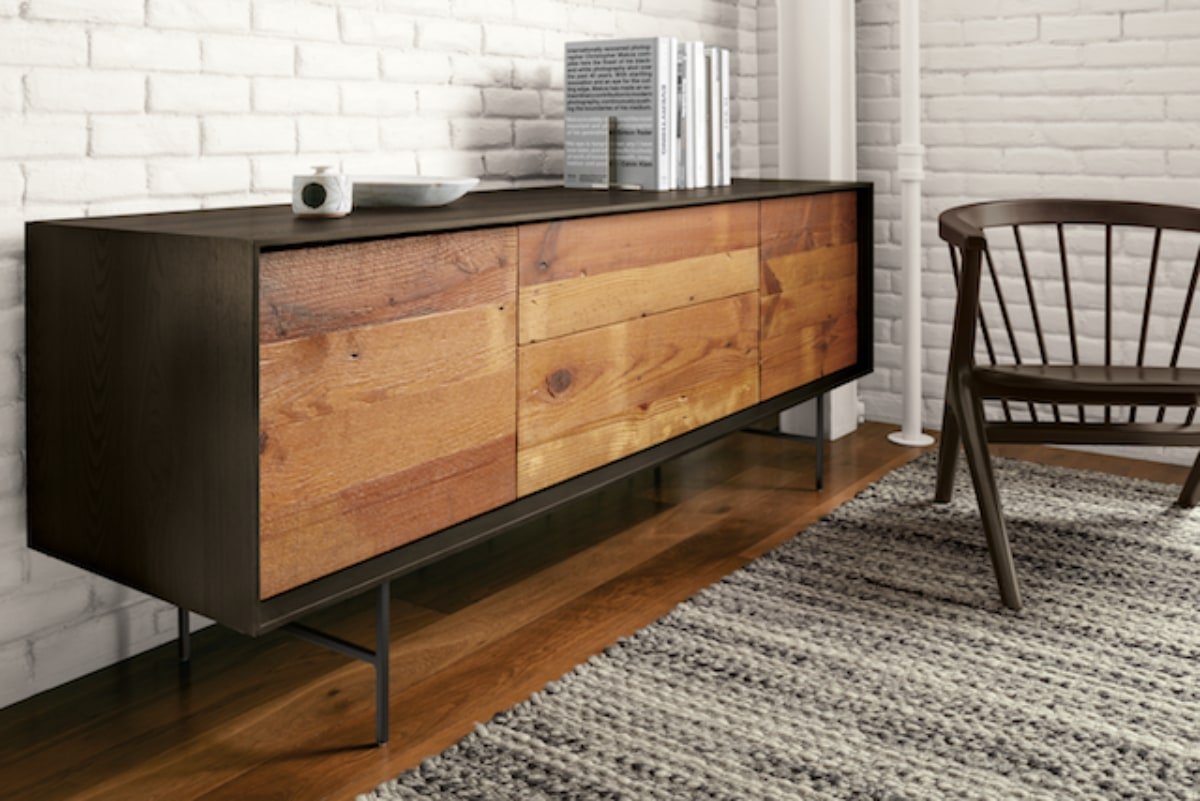From Waste to Furniture: Urban Wood Mining in Baltimore

The Baltimore Wood Project demonstrates how a smarter approach to urban wood waste can foster social, economic and environmental flourishing in a city.
The city of Baltimore, like many post-industrial US cities, is facing a wealth of challenges: a lack of economic opportunities; high unemployment; and a glut of vacant homes, contributing to blight and crime in the city. Baltimore is suffering from dereliction on a huge scale; 17,000 houses in the city are confirmed vacant, and the total number is thought to reach over 30,000. Where others just saw blight and decay, social services enterprise Humanim saw an opportunity to address many of Baltimore’s problems with a single, integrated and holistic solution.
The USDA Forest Service brought together Humanim and Room & Board, a modern furniture retailer with a nationwide customer base, in a unique public-private partnership, that aims to serve the people and care for the land. The project centres around a process of deconstruction of these empty houses, rather than demolition. This method is more labour intensive than standard demolition, but also has a far greater return on investment economically, socially and environmentally. The project’s impact is threefold: “reclaimed wood, reclaimed lives, reclaimed neighbourhoods.”

Reclaimed Lives
The deconstruction process creates many jobs for the local people of Baltimore; each deconstruction project creates 6-8 times more jobs than demolition in the city. The project employs people who face barriers to employment, perhaps they have a prior felony conviction or did not graduate from high school, and provides them with a living wage salary. The aim is to train these people in the deconstruction and preparation of materials, in order to build up their skill set. These are skills they can use within their job and employment opportunities in the future, and ultimately put people on the path toward lifelong, sustainable employment.

Reclaimed Wood
There is a lot of value locked up in these abandoned buildings — wood accounts for more than 10% of annual waste material in the US. Much of the material from the row houses is salvageable and can go on to be upcycled and live a second life as something new. The wood found in the abandoned homes is old growth or second growth yellow pine, a level of quality that is extremely hard to come across nowadays. The USDA Forest Service and Humanim partnered up with Room & Board in order to scale up demand and supply for this wood on a country-wide level. Room & Board take the wood that is prepped by Humanim employees and send it to their domestic manufacturers to be made into furniture and home decor. This creates a closed-loop system where old wood is diverted from waste streams, creating something new and beautiful, whilst reducing the need for raw materials. The collection is available to view/purchase here.

Reclaimed Neighbourhoods
Once the derelict buildings are removed, the Parks and People Foundation helps communities envision what these newly uncovered landscapes could look like. The abandoned buildings are transformed into green spots for the community, perhaps a park, an amphitheatre, a flower garden or a farmers market. An added benefit of deconstruction is that it costs far less to create a park or other infrastructure on one of these blocks compared to a demolished block.
The Baltimore Wood Project demonstrates that urban landscapes can also greatly benefit from stewardship and restoration. Through a smarter and more thoughtful approach to urban wood ‘waste’ in the city, this project addresses some of society’s most complex and pressing challenges: unemployment, ecological degradation and urban decay. The project aims to create a self-reinforcing economy that is rooted in the reclamation of wood, lives and neighbourhoods. The city of Baltimore acts as a pilot for this model of shared stewardship; the USDA Forest Service reports that many other post-industrial American cities are eager to give the Urban Wood Project a go.



